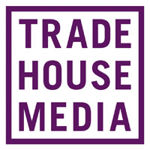Speak to some publishing businesses and they will tell you the magazine advertising market is in freefall, with downward pressure on circulation creating a spiral of decline. This structural change, created by changing media consumption habits, is having a knock-on effect into the advertising economy causing many publishing companies to see insurmountable obstacles. At Immediate Media Co, we don’t see it like this. We believe that this disruption is throwing up opportunities to innovate and deliver exciting integrated advertising opportunities for our clients.
Market in transition
The print advertising climate has been an incredibly tough one in the past few years with a number of factors combining to create a perfect storm. The decline in the circulation of paid-for print magazines, 23% over five years according to the Advertising Association, has occurred at the same time as a significant increase of supply of other types of media. It was only a little over ten years ago when Metro first launched, creating a whole new sector for free consumer titles.
This has been in tandem with the rapid growth of digital media consumption and, unsurprisingly, the advertising dollar has followed the eyeballs.
Looking at both the print and digital advertising markets, this has created an over-supply of inventory which in turn creates significant yield pressure as advertisers can access vast audiences for what feels like ever decreasing cost. But this supply also creates another challenge, namely getting cut-through in an increasingly crowded market.
As a result, there is a significant polarisation taking place. On one hand, a squeezing of traditional display advertising in both print and digital and on the other, a requirement to come up with more bespoke integrated solutions.
Building this out a little, advertisers are seeking to reach large-scale audiences as cost effectively as possible. In magazines, this is reflected by the buying power exercised by the major agency networks and in digital, an entire industry has been created to trade inventory via machines, known as programmatic trading.
Deeper engagement
At the other end, to answer the cut-through challenge, advertisers are increasingly seeking to create deeper engagement with consumers through more complex advertising programmes. Whilst complex to execute well, these campaigns tend to be high value and partnership in nature and can really move the dial for publishers from a revenue perspective.
These pressures are set against the backdrop of a tough market in print advertising where the decline in revenues across all magazines is well documented – 52% over the last five years, according to the Advertising Association.
In digital, where we have seen significant growth, the picture might not be as rosy as the headline statistics might suggest. Whilst the total market grew in the same period by 62% to now stand at £5.4bn according to the IAB, much of this growth is attributable to new advertising formats and platforms such as social, video and mobile.
Layer on the toughest economic circumstances for decades and you have one of the most challenging advertising environments of all time.
So how to respond? It’s all about developing the right strategies and having the right approach to implementation. This starts with our brands and investing to create the right platforms for our advertising partners. Beyond this, it’s also about developing a balanced advertising strategy that strikes a balance between trading effectively and being set up to make the most of new integrated opportunities.
Brand strategy
The response of many publishers to the prevailing economic climate is a defensive strategy, focusing purely on savings. Although we are all looking to make our money work harder in these tough times, the Immediate approach is to invest in developing our brands across multiple platforms.
Our brand strategy is centred on offering deep engagement with consumers and building loyalty. We have done this through continuing to invest in quality editorial and marketing. For example, with the our flagship title, Radio Times, we had two television advertising campaigns in 2012, the first in seven years, to boost copy sales and deliver bigger audiences for our advertisers. We have twinned this with investment in award winning editorial. This approach enabled us to post circulation growth in the ABC period (July-December 2012). We also were able to deliver print advertising growth, something very few magazines achieved.
This investment saw us win significant new advertising business against others adopting an approach of managed decline. Indeed, in most of our major markets, we have grown our market share and voice for advertising clients.
The investment also has an added benefit of boosting RSV, which in turn creates a virtuous circle in terms of circulation stability.
Another key component of our brand-led strategy is to maximise the opportunities created by having a large portfolio of deeply engaged consumers. Subscriptions are a key component of this, creating relationships with our readers that can last a lifetime. With more than one million subscribers across our titles, this is the kind of loyalty advertisers want to tap into. We are investing significantly, well over seven figures, in order to grow this channel over the next twelve months.
This vast file of engaged loyal consumers also opens up new e-commerce revenue streams, the best example being RT Travel. Here we are developing an exciting, data-driven direct marketing business where revenues come direct from a consumer – rather like a retailer.
Digital investment
We think this continued investment in print sets us apart from the majority of other publishers but it doesn’t stop there. To embrace the changing market, we’re also making significant investments in opening up new digital channels for our brands with a further seven figure investment next year earmarked for digital.
With a strong digital heritage running through Immediate’s DNA, we are strengthening our position and building a truly world class digital team taking it from 30 to 90 in the past year along with a real focus on product development.
We’ve already made great strides in this area with the Immediate web-publishing platform accelerating growth on some of our key properties such as RadioTimes.com, which has grown by 80% in the past twelve months and BabyExpert.com, which has seen unique users soar by 137%.
Other key digital priorities for the year ahead include developing our tablet offering, a platform that is starting to gain real traction for us.
So, having developed brand strategies that deliver growth, how do we bring this to life for our advertising partners?
A Balanced Approach
As outlined earlier, we believe that the market is polarising, with clients investing more heavily in trading on a large scale basis or investing in high engagement programmes putting a squeeze on the traditional display sector. We therefore take a balanced approach to making the most of the opportunities this disruption creates.
Trading Scale
On one hand, we seek to trade our scale effectively. At Immediate, we disproportionately weight to a more mature, affluent, AB demographic from an audience perspective. This demographic has weathered the recession better than most and is the engine room of consumer spending, so we’re fortunate to have significant penetration into this demographic with titles like Radio Times, BBC History, Gardener’s World and CountryFile to name just a few. Collectively, we estimate that we reach 36% of this important demographic across our portfolio of titles.
From this privileged position, we are able to create meaningful partnerships with the major agency networks, offering in-depth connections with loyal, wealthy consumers across multiple channels. We reward those who are prepared to invest in our portfolio of brands. This approach has enjoyed considerable success with revenues from our biggest advertising agency customers up over five per cent in the last twelve months.
Deeper Engagement
In tandem with this lean forward approach to trading, we have also focused on making the most of our greatest assets, our content and its creators. We have made them available to our partners to take advantage of the growing demand for highly engaging, content driven, advertising solutions. Whilst it’s not trivial to structure and resource accordingly in order to win and execute the big engaging, campaigns, doing so can deliver significant revenue growth.
To execute these campaigns successfully requires the input and support from all parts of the business. Whereas in the past we might have focused on selling core display, we have shifted focus onto multi-platform campaigns, that require people with knowledge and expertise in different areas, from editorial, publishing, marketing, design, tech, the list goes on.
In collaborating effectively in this way, we are better able to achieve our goals and grow advertising revenues and outperform the market – something not many magazine publishers are doing at present.
New Business
That has enabled us to win significant new business across our brands using a similar approach, from which we have two, standout case studies. The first is a multi-year campaign for Michelin with BBC Top Gear. The seven-figure deal is a media first and Immediate’s biggest deal to date. This multi-faceted campaign, promoting Michelin tyres, spans the magazine, website, apps, a specially created microsite and social media. The campaign comprises print advertorials, bespoke videos, research and UGC from motoring fans. It required input from across the business and simply could not have been won without the insight provided from different parts of the business. This was led by editorial, the creative brains behind this, with support from sales, technology, marketing, insight and design.
The next was a £1.5 million win from Silverspoon called Bake With the Best. This campaign spanned eight of our platforms and runs for the whole of 2013. This involved the creation of significant amounts of bespoke content showcasing the family of Silver Spoon Company brands across the baking sector, with each magazine featuring its own unique recipes specifically created and photographed by the Immediate Brand Solutions team.
The deal, brokered and managed through Newcast at ZenithOptimedia began in January 2013, with the 12-month campaign reaching more than 10 million adults throughout the UK.
In the past, it would have been more challenging to secure wins like this, however our new collaborative approach engages the talents of people across the business. Campaigns like this present a fantastic growth opportunity going forwards, with the increased desire for bespoke solutions from our advertising clients.
By having an effective trading strategy, establishing the right structures, embedding collaboration deep in the business and across functions - we are creating a new commercial focus to position ourselves for success. We are excited about the future and ready to emerge as market leaders in a time of disruption.












